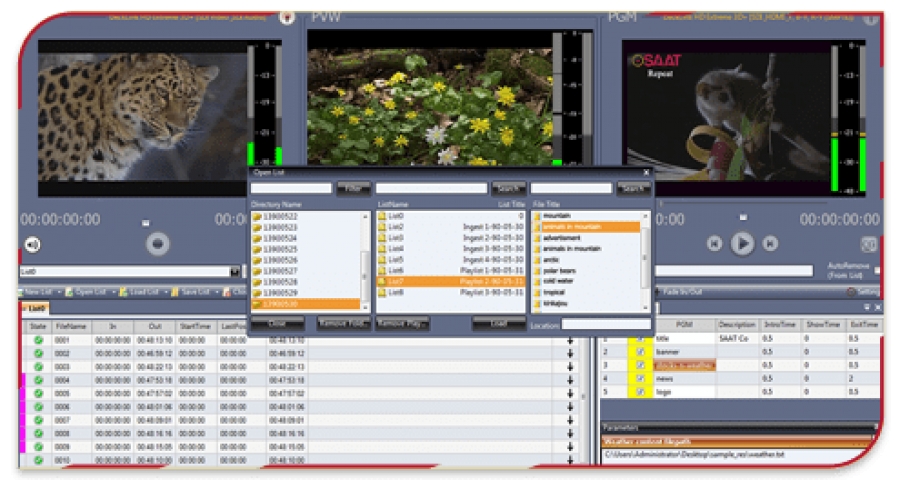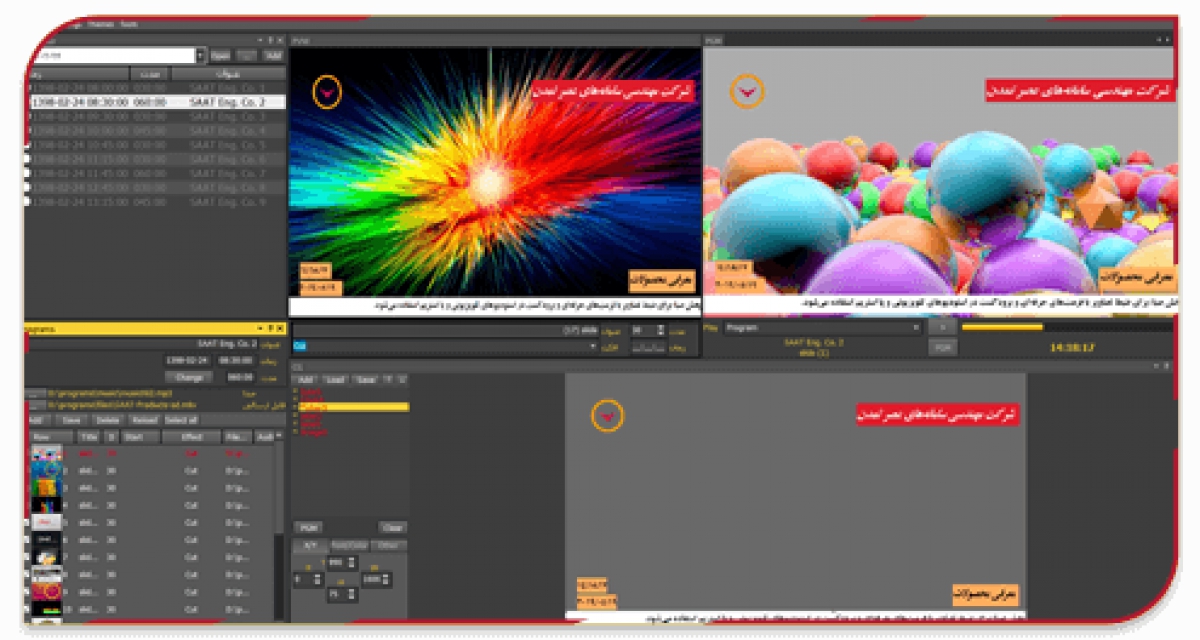SABA (Broadcast Automation)

Broadcast Automation (SABA)
Digital video
The spread of digital equipment, increasing amount of media content, and high-speed data transfer on one side, and standardization and constant improvement of digital audio/video on the other side have caused a revolution in the industry of recording, production, broadcast, and signaling. Nowadays, SD/HD pictures and even 4K pictures are widespread, and producing 8K pictures is predictable soon. Proportionate to the growth of production quality, some compression standards like H.264, H.265, and HEVC that rely on the processing capacity of computers, have enhanced the quality without raising the size. And when broadcasting, techniques of high-dynamic-range (HDR) imaging helps to make the best use of the bandwidth. Today, media industry producers provide their customers with their most recently developed professional equipment and productions that offer the latest technology.
PlayRec
PlayRec (Playout/Recorder) systems, which support broadcast standards and SD/HD/4K qualities, record the pictures and play them. SAAT Co. has designed and produced SABA PlayRec for the above purpose, SABA Playout for playing playlists, and SABA Playlive for playing input streams.
With proper hardware equipment, SABA Ingest/Stream records from several signals simultaneously. It works 24*7 non-stop and performs as a logger, too. It can relatively reduce the quality of the recording signal to provide live monitoring while recording. It also receives signals and streams them.
These products provide more integrated professional studios, more centralized equipment, and mobile small-sized studios that keep broadcast qualities.
Visual Radio (Slide TV)
Besides the professional audio and video playouts, which work independently, digital broadcast platforms have provided the ability to integrate and send any type of media content through a single standard bed. Hence, radio signals are transmitted on the same platform as television signals, only with different bandwidths. In the meantime, a new media with a new approach has been born; it attaches a gradually changing picture to high-quality audio and broadcasts them on limited low bandwidth. In other words, a radio channel can change to a visual channel with the least expenses. In this radio, slides of pictures company the audio to add a visual concept to the radio.




